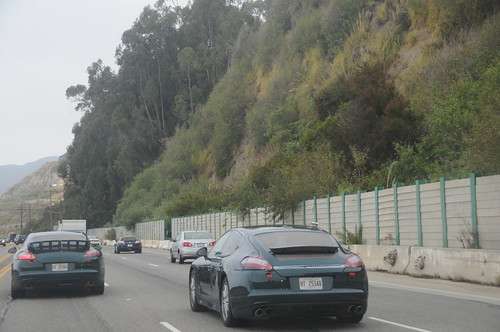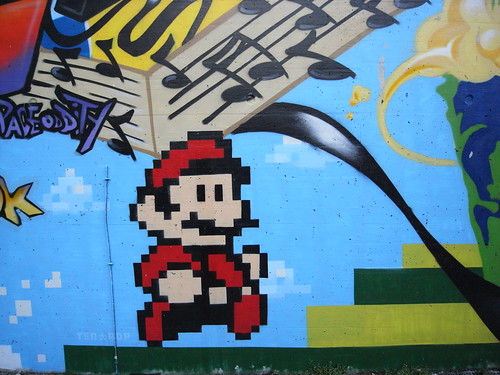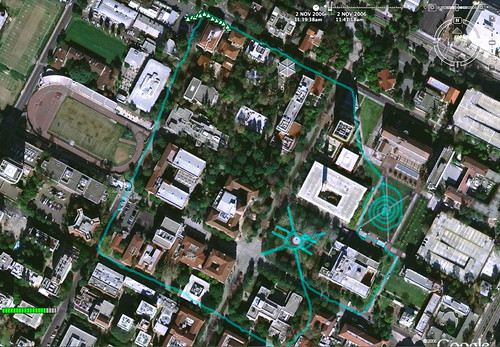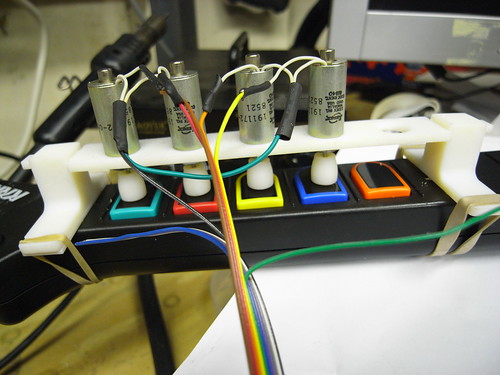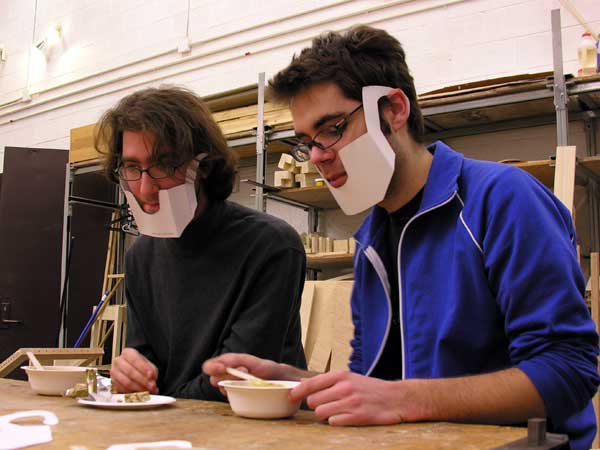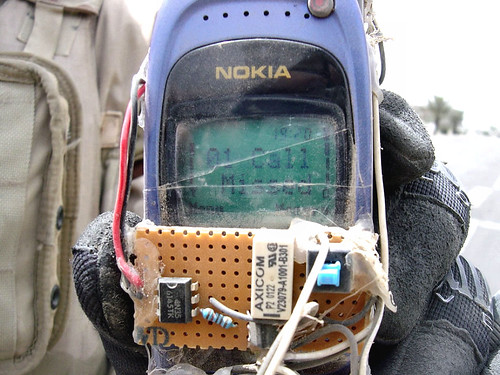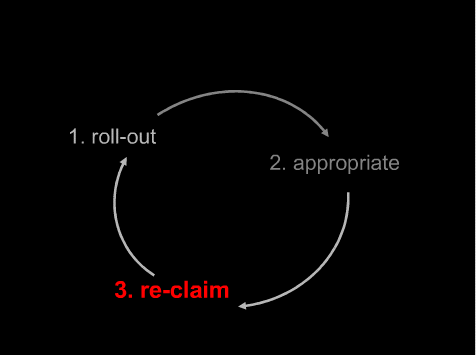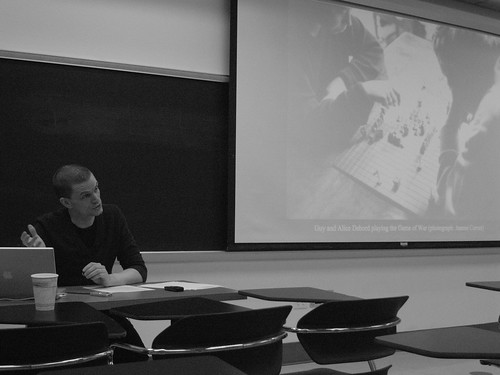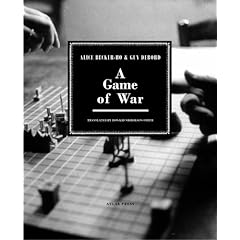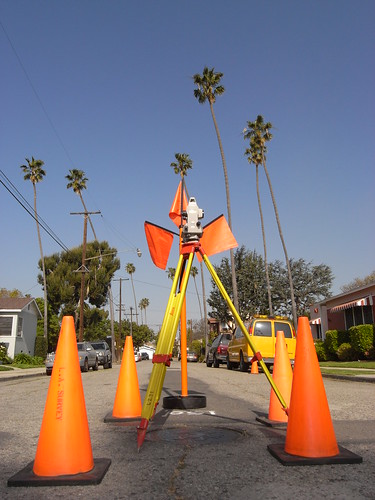
Time for the next chapter. Shortly, I’ll be officially joining a fantastic little studio within Nokia Design called Design Strategic Projects. It’s a studio of very clever, insightful and thoughtful designers and researchers. It’s a playground of big ideas, and plenty of support to work them through. There are some big questions and even bigger opportunities to continue the work I’ve been doing in the gaps between creative practices, technology and critical analytic thinking.
(To give you a sense of what I mean, check out this Sunday’s New York Times Magazine, which features the work of Jan Chipchase and Duncan Burns, two new colleagues in the studio.)
Everything I’ve been doing for the last 15 years has brought me here. Last 15 years? There was the engineering chapter, the computer-human interaction chapter, the critical theory chapter and then the dot-com chapter. Academia was like an inverse sabbatical. It was a great opportunity to think how to bring all of these things together into one un-hyphenated undisciplinary craft. Sadly, academia turns out to be way too conservative and, despite quotidian wisdom, a thin veneer of intellectual and creative freedom behind a very conventional and super risk averse for-profit business, full of the usual political rough-housing.
The question of relevance also comes to mind with regard to academia, which was arguably the one thing you might guess I was preparing for. I mean, why else get a PhD in an area of inquiry that’s as close to Philosophy and Critical Theory as anything. I’m not hating too hard, but there are challenges ahead for academia if it wants to participate in the idea/knowlege/insight/culture circulation networks beyond the greenways of its campuses. There’s the insularity of its publishing practices. Who really reads the swirl of endlessly regurgitated write-ups that sluice through the ACM and Springer-Verlag presses every year. They’re locked away behind password protected and over-priced journals, have citation practices that have no qualms with incest and, let’s face it, peer-review? P’lease.
Where I’ve been, and its only one place, there’s a shortage of emphasis on critical thinking and fundamentals like analytic writing. Across the board there should be some context for “studios” where students put into practice the ideas developed and discussed so that “practice-theory” allows students to develop the trans/inter/undisciplinary skillsets that will allow them to understand how to shape the worlds they occupy in analytically-focused material ways. By “across the board” I mean in most disciplines where people are expected to practice what they’re been theorizing and reading and writing about. Which is, basically, everyone. I could go on, and I will — I think there’s good work to be done there, and I will continue to do that work. It’s more a systemic problem. The context for discussing these issues and addressing them has to be from a position that is protected from political and institutional vulnerability, and where there’s real, honest support. That is not the case now.
The next bit of kit to add to my practice is Design. As soon as the opportunity presented itself to become a part of a design studio and learn how design fits in with this larger goal of being able to do work through multiple-simultaneous practices, and to focus on problems and how to approach them, rather than disciplines and their nutty boundary maintenance politics.
With engineering I can make things. I’ve learned how “art-technology” is a great kind of practice idiom for exploring strange new near future ideas, the kind of research & development that you just can’t get away with as a disciplinary engineer. Design is the right addition to the engineering, my modest art-technology practice, and my predilection towards critical thinking as an approach to making and understanding new near future things. On top of that, there are some new things to be done in the area of prototyping and sketching new ideas relying on engineering fundamentals together with design principles.
This is a continuation of present interests, questions and areas of activity. The Near Future Laboratory remains the home for bright ideas and their playful execution. The decision to become a part of the Design Strategic Projects studio was largely based on a clear indication that I am expected to continue and expand upon the themes and approaches and insights we’ve been excavating at the Near Future Laboratory. A perfect expansion and continuation of what Nicolas and I started a couple of years ago, with the resources of Nokia. It’s time for some serious play.
Parenthetically, in and around the time I was contemplating this next chapter, Adam Greenfield was too, as it turns out. He’ll be joining as the head of Nokia’s Design Direction, working in the service and user interface domain. Adam and I are friends, and have been IM’ng over these moves over these last months. It was a nice affirmation to hear him considering this. Adam’s someone who I trust, and I’m looking forward to the chance to ponder big things and play around with some new ideas over at Nokia House.
More about Design Strategic Projects. The studio was formerly called Insight and Innovation. The work they did in that guise is pretty much exactly the sort of work I should be involved in. It combines analysis, visual storytelling, probes about new interaction paradigms, and speculative near future inquiries into new interaction rituals. One project that recently bubbled up to the public spotlight is called Remade, a phone made entirely from upcycled and recycled materials. It’s actually one central theme in a larger network of principled design projects that are incredibly exciting. What’s more, we’re going beyond talking the talk — appearance models and styling are well and good, but this is a design studio that will be making objects that function, turning their design principles and theory and coupling it tightly to everyday practice. There’s been some recent press about the studio and its people if you want some more insight. In the near future, there’ll be more of a public voice to the studio’s work. This was one of my central discussion points when we started late last summer chatting about my joining the studio, and every rung of the ladder up the leadership, across several international borders has indicated that this is indeed part of the mission.
Some Design Strategic Projects Stuff that explains a bit more about what I’ll be getting into.
NYT article on the studio, focusing on approaches to innovation, human fundamentals and how to design can make garbage beautiful. It features Rhys Newman, Raphael Grignani, Andrew Gartrell and Jan Chipchase.
Over hearing the raw interview while in the studio, I became increasingly convinced that I needed to be a part of this team. I couldn’t help smiling at the smart replies, like Jan’s response when asked if the studio felt pressure to design new phones quickly in an increasingly competitive market —
"Mr. Chipchase responded with a quizzical stare. “Why do you want to innovate faster?” he asked. “Are you innovating something gimmicky just to sell a product? Or is it saving the planet you are after?”"
(By the by, the studio doesn’t design phones in a fashion you might think. It’s an innovation studio, with no mandates to create market products in the way other design groups might. We use design to clarify broader, strategic concerns and themes, rather than tactical responses to 6-9 month product pressures.)
Jan and Duncan Burns were recently featured in a New York Times Magazine profile.
Raphael Grignani is an interaction designer who brings a great humor and fantastically Franco-critical eyeball to all the work around him.
Jan Chipchase is the brilliantly visual insight excavator. I’m particularly excited to be now officially a colleague with Jan. I have much to learn from this character.
Francesco Cara presentation at Lift08. Francesco leads the two DSP teams, one here in Los Angeles, the other in Helsinki.
Jan Chipchase — Digital Nomad
Continue reading Where To Next? Design..
